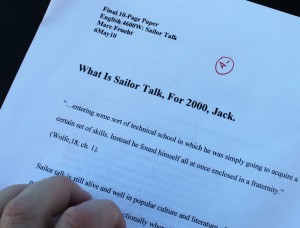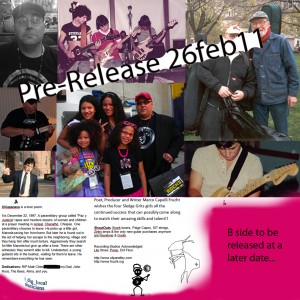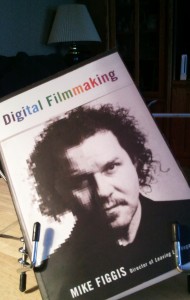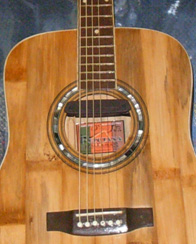
Final 10-Page Paper English 4600W: Sailor Talk Marc Frucht 6May10
“…entering some sort of technical school in which he was simply going to acquire a certain set of skills. Instead he found himself all at once enclosed in a fraternity.†(Wolfe,18; ch. 1).
Sailor talk is still alive and well in popular culture and literature of the sea both old and new and it is still being used functionally where it does apply; but also it can be found in lore, meme and memory even in some surprising places that will seem to have little or nothing to do with sailing or the sea itself.
Take for instance the very common expression “Jack of all trades,†which has survived hundreds of years! It still refers to any contemporary generalist handyman on sea or on land. Its roots are clearly nautical describing the famous “Jack†of “Jack Tar†fame who still features as the iconic sailor boy on the cover of each and every box of Cracker Jack since the 1890s.
As Herman Melville says in chapter 26 of his book Redburn, a sailor must be good at many things; in other words, he must be a “jack of all trades.â€
The business of a thorough-bred sailor is a special calling, as much of a regular trade as a carpenter’s or lock-smith’s. Indeed it requires considerably more adroitness, and far more versatility of talent. (Melville,120)
Some would claim this applies to most people, but take a look specifically at the many jobs worked every day by an able-bodied seaman.
A thorough sailor must understand much of other avocations. He must be a bit of an embroiderer, to fork fanciful collars of hempen lace about the shrouds; he must be something of a weaver, to weave mats of ropeyarns for lashings to the boats; he must have a touch of millinery, so as to tie graceful bows and knots, such as Mathew Walker’s roses, and Turk’s heads; he must be a bit of a musician, in order to sing out at the halyards; he must be a sort of jeweler, to set dead-eyes in the standing rigging; he must be a carpenter, to enable him to make a jury-mast out of a yard in case of emergency; he must be a sempstress, to darn and mend the sails; a ropemaker, to twist marline and Spanish foxes; a blacksmith, to make hooks and thimbles for the blocks: in short, he must be a sort of Jack of all trades, in order to master his own. (Melville,121)
Earlier on page 65, Melville had explained that an observer would see that these people have their own unique culture with a way of dress common only to each other as well as a common style of talking, and even some shorthand only they understand. It might seem to others as if they’re finishing each others’ sentences and the newcomer or outside observer cannot be expected to have any idea what these conversations mean.
People who have never gone to sea for the first time as sailors, can not imagine how puzzling and confounding it is. It must be like going into a barbarous country, where they speak a strange dialect, and dress in strange clothes, and live in strange houses. For sailors have their own names, even for things that are familiar ashore; and if you call a thing by its shore name, you are laughed at for an ignoramus and a land-lubber. This first day I speak of, the mate having ordered me to draw some water, I asked him where I was to get the pail; when I thought I had committed some dreadful crime; for he flew into a great passion, and said they never had any pails at sea, and then I learned that they were always called buckets. And once I was talking about sticking a little wooden peg into a bucket to stop a leak, when he flew out again, and said there were no pegs at sea, only plugs. And just so it was with everything else. (Melville,65)
This also describes the term “coterie speech†which mostly consists of expressions spoken between members of a group of people who have been around each other long enough that outside observers may even think they have their own coded language. This certainly applies to sailors today as well as in the past. Anyone who has spent some time in local New London, Connecticut bars and restaurants (or those in any other port town for that matter) will have seen this from military sailors as well.
“In the forenoon watches below,†says Richard Henry Dana, Jr in his 1840 narrative Two Years Before the Mast, “our forecastle looked like the workshop of what a sailor is, — a Jack-at-all-trades. Thick stockings and drawers were darned and patched; mittens dragged from the bottom of the chest and mended; comforters made for the neck and ears; old flannel shirts cut up to line monkey-jackets; southwesters were lined with flannel, and a pot of paint smuggled forward†(Dana,220)
Perhaps the most accessible contemporary use of this Jack/Trades expression is heard whenever someone turns out to be unexpectedly skilled at repair. Suppose a well-dressed businessman stops briefly on his way to work in an office and fixes a flat tire. Upon being thanked and called handy, he might refer to himself as “jack of all trades, master of none really,†or the person thanking him might even say “you’re a regular jack of all trades.â€
Turning to songs at sea we can easily see how many nautical words and expressions might come to endure the test of time.
A sea chantey can easily illuminate some words that remain in use because they’re sung repeatedly over time for the life of a vessel, but also carried onto other ships by people who remember them and lead song even when they’re new to a job. These are often sung in local bars on land as well which would help explain how so many nautical terms are still being heard in coastal towns and even further inland.
Chanteymen are seldom chosen by leadership. (I’ve often wondered if this very word “leadership†doesn’t have its origins in being leader of a ship. It is now even used for people serving on corporate boards, sports coaches and managers and even members of Congress) More, they come from the grassroots when work is being accomplished and they are often led by just whoever can remember all of a song, or at least a strong part of a song. (Grasso,7-8)
Many shanties (often spelled “chanty,†“shanty,†and “shantey†the world over too) are helpful in unpacking much of the jargon used aboard sailing vessels because singing these songs might even serve to help a “newbie†in his or her desire to “learn the ropes†with the quickest facility.
/ A full-rigged ship is a royal queen, /
/ Way-hey for Boston town, oh! /
/ A lady at court is a barquentine, /
/ A barque is a gal with ringlets fair, /
/ A brig is the same with shorter hair, /
/ A topsail schooner’s a racing mare, /
/ But, a schooner, she’s a clown-O! (Hugill,36)
One can tell a hauling song fairly easily when the word “haul†is used and even sung out as “hey, holly, hilly, oh!†or “hand-over-hand.†Likewise “Yo ho, heave ho!†might signal a heaving song as well as words such as “hee-lay-ay†and “round†or “rovin’.†(Hugill,28)
Jack London’s best selling novel The Cruise of ‘the Dazzler’ is chock full of nautical expressions and perhaps even some allusions to heaving and hauling songs.
“Hard a-lee!†‘Frisco Kid cried, throwing the tiller down, and following it with his body. “Cast off! That’s right. Now lend a hand on the main-sheet!â€
Together, hand over hand, they came in on the reefed mainsail. Joe began to warm up with the work. The Dazzler turned on her heel like a race-horse, and swept into the wind, her canvas snarling and her sheets slatting like hail.
“Draw down the jib-sheet!†(London,53)
Some of these expressions are universal and show up quite similarly in other languages as well as broken English from people who speak it as a second or third language. “Come on!†he [French Pete] shouted. “Put two reef in ze mainsail! We get out queeck!†(London,77)
Yarning is a long-standing tradition at sea the world over; and can still be heard nowadays anytime someone might ask a question of a local “old salt,†someone who has seen many years aboard ships. After hearing the answer, someone often walks away wondering how much, if any at all, of what s/he just heard is true. Most of it probably is. Or maybe not.
B. Traven has a character named Fibby in his book The Death Ship give money to someone named Flory. “Take this. It’s not only for your story, but for your having told it so splendidly. It’s a great gift, my boy, to tell a story the way you did, a story that is not true, but that sounds true. That’s the point in story telling. Making people believe the story is true. (Traven,36)
Many years after writing Narcissus Joseph Conrad wrote:
Only in men’s imagination does every truth find an effective and undeniable existence. Imagination, not invention, is the supreme master of art as of life. An imaginative and exact rendering of authentic memories may serve worthily that spirit of piety towards all things human which sanctions the conceptions of a writer of tales, and the emotions of a man reviewing his own experience. (Villiers,62)
Nowadays there are still scholars studying the impact that authors such as Melville and Conrad have always had on hearts and minds of the present day people all over the world.
Even in a fictional place like SpongeBob SquarePants’ pineapple under the sea, there is a little bit of sailor talk to be found.
In Stephen Hillenburg’s 2004 SpongeBob SquarePants Movie, there is mention of a chum bucket in the context of a restaurant name. Then there’s the expression, “Dinghy ahoy / Dinghy off the port bow.†Surprisingly there are only a few other actual nautical terms throughout the entire film, but if you consider the setting and the themes themselves, I guess all the dialogue throughout can be considered “sailor talk.â€
The expression “able-bodied†is used a few times, but only referring to patrons in bars. Perhaps they’re sailors, but the movie shows them to be men and women of all ages from all walks of life. Just people dining in a restaurant who are able-bodied simply because the movie says so.
The term “chum†has taken on other slang terms over time but primarily means shark bait. Often the blood and guts from smaller fish is ground up and thrown overboard to entice sharks to come closer to a fishing vessel so they can then be caught. So “Chum Bucket†becomes an unusual and humorous name to choose for a fast food restaurant.
So The SpongeBob SquarePants Movie appears to be a lighthearted fantasy loosely based on a slightly nautical theme which is actually generic enough to take place on land OR out at sea. But this certainly brings forward much nautical lore and seagoing themes which the producers are aware remains popular among boys and girls of every age. This movie did quite well at the box office for a fairly long run before “going to video†where it remains in print for sale today.
I also did quite a bit of research on one nautical noun “weft†which comes from the Old English “weave†but took on the nautical meaning for any fabric used to signal, such as a flag, or old clothing hung over the bow, or even a square sail itself positioned differently than the rest of the rigging while facing another vessel. (Soanes)
This term doesn’t see much use as a nautical term nowadays but a similar word “waft†signals odors and airs coming and going; “wafting.†It serves here a decent poetical allusion to other words which come and go much like the wind on the salty sea.
I was smitten by weft’s placement in Samuel Coleridge’s Rime Of The Ancient Mariner but imagine my surprise when during a Literature class last year I learned that the very word I’d enjoyed in the 1798 publication had been removed from the 1834 version.
Yes, the line:
/And broad as a weft upon the left / (Gardner, 119)
Became:
/ Still hid in mist, and on the left / (Gardner, 53)
Coleridge read a bad review of his epic poem in October 1799’s British Critic. The reviewer said he is “not correctly versed in the old language which he undertakes to employ,” calling the phrase “broad as a Weft” nonsensical. Apparently Coleridge agreed to remove it from subsequent editions. (Livingston,261)
But Livingston points out in his book The Road to Xanadu that weft is “a term of baggle and distress and pursuit and capture on the sea,†so the word actually did fit perfectly right where Coleridge had originally set it. Its connotation poetically near the word “broad†would likely signal great distress. Perhaps Coldridge was young at the time and deferred to his reviewers as mentors; because he could’ve kept that nautical term in all the next editions of his poem of the sea especially if these same reviewers knew little or nothing of nautical terms themselves.
Livingston devoted nine full pages to Coleridge’s use of the word; but here are just a few of the things he had to say.
a weft (or waft) was at first any ‘cloth’ that could be used to give a signal. and that is its sense in the first nautical dictionary which includes it — Sir Henry Mainwaring’s “Sea-Man’s Dictionary or Nomenclator Navalis of 1644:
when a ship doth hang a waft upon the mainstay, either that it hath sprung a leak or is in some distress. Any blanket, gown or the like hung out for a sign is called a waft. (Mainwaring ii)
Here, then, is ‘weft’ — a ‘Sea-Word’ if ever there was one; an alien ashore, to land-lubber critics a stumbling-block, and even (to one of them) foolishness. What, now, of Coleridge? For his use of the term leaves no question that the word was a living one to him. (Livingston,264)
Livingston also shows how many other words come from the same “weaveâ€:
The term, after the way of words which live chiefly on men’s lips, without the stabilizing influence of print to fix them, is found in many forms: ‘waffe,’ ‘weffe,’ ‘waif,’ ‘waift,’ ‘whiff,’ ‘whift,’ ‘wheft,’ ‘wave,’ ‘waft,’ weft.’ That roll of variants alone would tell the story. Words do not so behave, when the convention of the printed page has set its stamp of uniformity upon them. How a term so rich in stirring associations escaped the absorption into literary usage, I do not know. The fact remains that it did escape, and it came to landsment, if it came at all, almost entirely through direct acquaintance with the sea. (Livingston,262)
He also mentioned on the same page that two men, Defoe and Smollett, both maritime novelists were the only people who employed this word before Rime of the Ancient Mariner and that he suspects it “reached Coleridge from the sea, along with other sailors’ lore.”
Most sailors both contemporary and throughout time struggle through brutal hard work for long shifts at a stretch under conditions which make lives feel uncertain at best, perhaps routine at the very least; (if they’re lucky) and if they live to tell about it, they sure do live to tell about it.
Stephen Crane ends The Open Boat with a passage which clearly exemplifies how sailors’ talk works its way into popular language decades or centuries later because the sailor just couldn’t help but tell anyone who will listen, just what it was like to endure a journey at sea the best way he can tell it.
“When it came night, the white waves paced to and fro in the moon-light, and the wind brought the sound of the great sea’s voice to the men on the shore, and they felt that they could then be interpreters.†(Crane,77)
Works Cited:
Coleridge, Samuel T. Annotated Ancient Mariner: The Rime of the Ancient Mariner. Ed. Martin Gardner. Amherst: Prometheus Books, 2003.
Crane, Stephen. The Open Boat. New York: Dover, 1993.
Grasso, Glenn, and . Songs of the Sailor. Mystic: Mystic Seaport Museum, 1998.
Hugill, Stan. Shanties from the Seven Seas. London: Routledge & Kegan Paul Ltd., 1961.
Livingston Lowes, John. The Road to Xanadu. London: Lowe and Brydone Printers Limited, 1927.
London, Jack. the Cruise of ‘The Dazzler’. Breinigsville: Aegypan Press, 1902.
Mainwaring, Sir Henry. The Sea-Man’s Dictionary. 1644. Menston, England: The Scholar Press, 1972. (as cited by Livingston Lowes on pg. 264)
Melville, Herman. Redburn: His First Voyage. Evanston: Northwestern University Press, 1849.
Soanes, Catherine. “Weft.” Compact Oxford English Dictionary of Current English. 3rd Revised ed. Oxford: Oxford University Press, 2008.
Traven, B.. The Death Ship. Brooklyn: Lawrence Hill Books, 1934.
Villiers, Alan. Joseph Conrad: Master Mariner. Suffolk: Seafarer Books Sheridan House, 2006.
Wolfe, Tom. The Right Stuff. Toronto: Farrar, Straus and Giroux, 1979.













